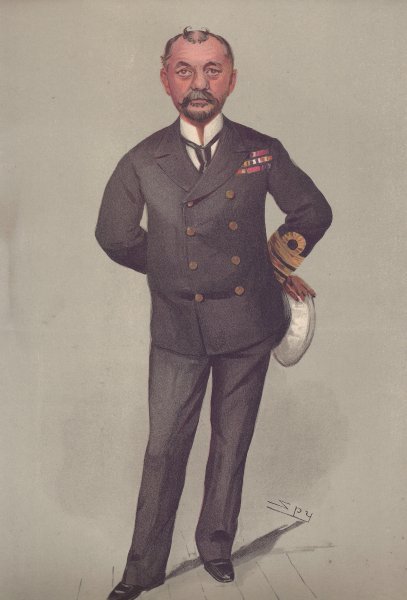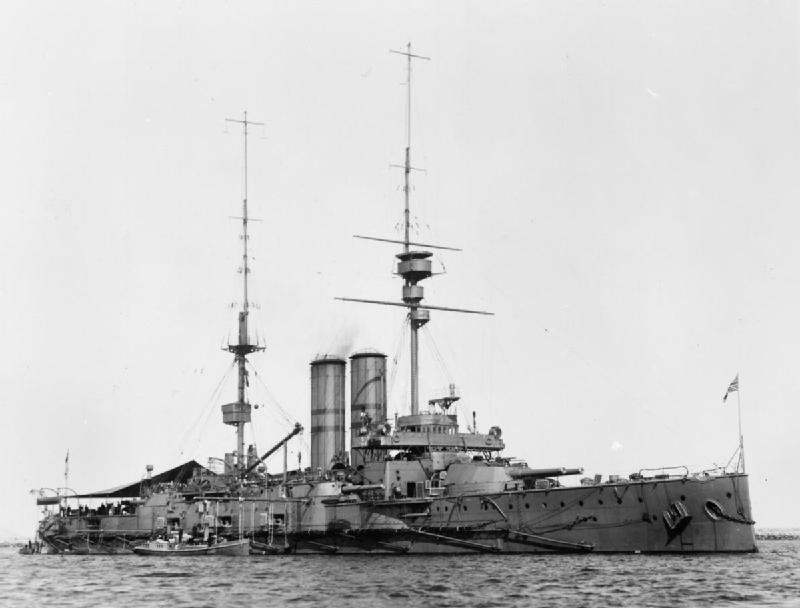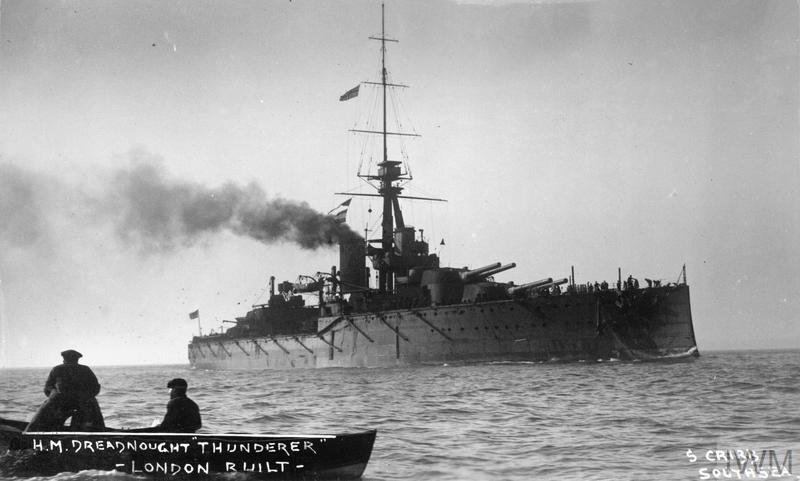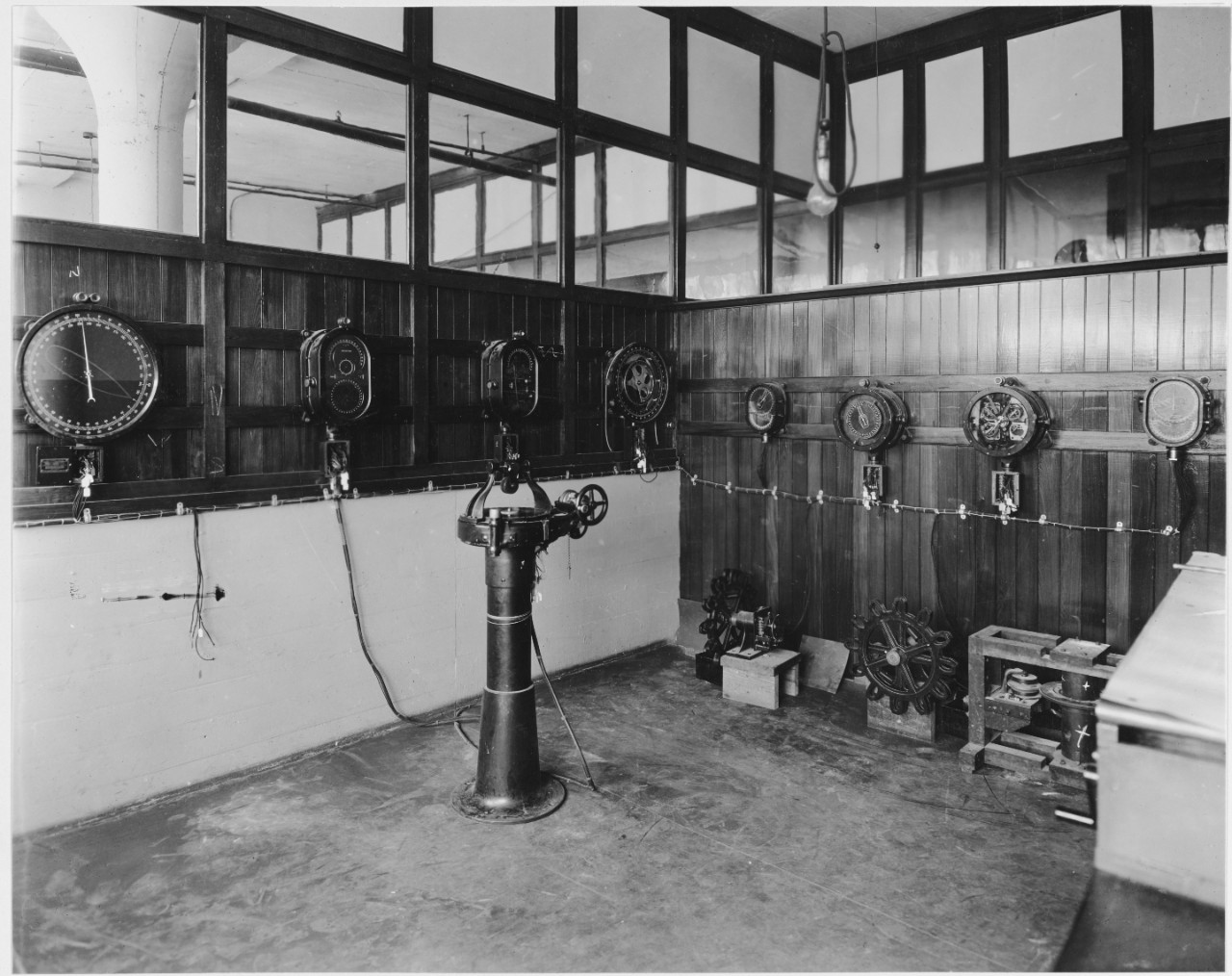The basic idea behind the gun director is simple enough. Naval guns tend to be unpleasant things to be around, with all the noise and smoke, and it would be nice if the person doing the aiming didn't have to be right next to one where it might interfere with his work. This was not a new idea when the fire-control revolution broke out around 1900, and the first directors had been installed on warships three decades earlier. Given the technology and tactics of the day, it wasn't particularly flexible. Each gun had fixed positions which would converge its fire on a specific point at a specific range, initially dead abeam at a range of 800 or 1100 yards, with later systems having more options for both range and bearing. The director operator would help guide the ship so that the enemy was in that location, then fire all of the guns electrically when the ship was level, helping to mitigate the problems of roll that plagued naval gunnery. This worked well enough with the slow ships of the day, and the short range meant that the danger space was large enough to compensate for errors in rangefinding.

A caricature of Percy Scott
But by 1890 or so, increased speeds and ranges had made the traditional fixed director obsolete, and the increasing size of guns meant that most ships mounted only two turrets, so the duty of gunlaying returned to operators in individual turrets. But this hiatus lasted only 15 years or so before Percy Scott, who had initiated major improvements in British gunnery starting with continuous aim from lighter guns, realized that for best accuracy, he really did need to separate the man doing the aiming from the smoke and shock of the gun firing. There were several reasons for this. Having an individual aimer for each turret worked well enough when there were only two turrets, but the arrival of Dreadnought meant this was no longer the case. Increased ranges meant that if each turret fired when it was ready, spotting would be nearly impossible and the smoke from one turret would likely interfere with its neighbors.
Instead, Scott's plan was to use his new director as a master sight, mounted high on the mast where it would have a better view at the increasing ranges becoming common. But offsetting the director from the turrets meant that the turrets couldn't just be pointed in the same direction as the director, and Scott designed a device to compensate. The most obvious problem was parallax, the fact that the turrets were offset along the ship from the director, and thus their aim needed to be adjusted to converge at the point of impact. Less obvious problems were dip (the fact that the director was much higher than the guns), the fact that the turret's roller paths weren't precisely level with the ship, and even the ship's motion as it flexed and twisted in the sea. All of these were solvable, though, and Scott's prototype was installed on the pre-dreadnought Africa in 1907 with the support of the Director of Naval Ordnance, John Jellicoe.

HMS Africa
But the new director also had a second role to play. Scott's continuous aim system worked well to compensate for roll, but the main guns of a battleship couldn't elevate fast enough to make use of the technique. The director offered another solution. The director layer would set the crosshairs such that the target would pass through them at a specified point in the roll,1 and then press the firing key at the right moment, much as traditional gunners did. The trainer would compensate for the ship's yaw with a vertical crosshair, and the instructions from both positions were passed to the layers and trainers in the turrets. When both were on target, the guns would be fired. The biggest downside to this method was that it reduced the rate of fire, although how much depended on the motion of the ship. The director also gave a centralized location for spotting corrections to be dialed in, although this took more time, slowing the system to the point that some officers thought independent gunlaying would give better results in combat.

HMS Thunderer
Development work on the system continued, and in 1912, firing trials were held between director-equipped Thunderer and her sister Orion, firing using individual aim. Each was fitted with an Argo Clock, and the results were clear. Thunderer manged to fire 39 rounds in three and a half minutes, of which 26 would have hit a ship-sized target. In the same interval, Orion managed only 27 rounds, of which a mere 4 hit. Another major advantage was that the director allowed ships to fire both guns in a turret at the same time, giving heavier salvoes. This wasn't possible for individually-aimed guns, as the firing of one gun in a turret would throw off the other one. The results of this were clear enough that director firing was promptly adopted for all battleships.2 To back up the main director atop the mast, secondary directors were to be installed atop the conning tower and in X Turret. Another important improvement was a bearing transmitter to the rangefinder to make sure that both devices were pointing at the same target.
Nor was the RN the only power to experiment with the concept. The USN learned of the RN's successes in 1912 and rapidly began developing its own directors on a similar pattern. The American directors were simpler than their British counterparts, serving only to level the guns. The operator would position the telescope so that it crossed the target in the center of the roll, then pass the director correction along to the plot below. A warning buzzer sounded at the top of the roll, and then he pressed the firing key when the crosshairs were over the target.3 These worked pretty well, and were later able to benefit from RN war experience after the US entered the war.

An American Sperry director, 1918
Directors had been fitted to 8 British battleships by the outbreak of war, but installation proceeded rapidly, and by the time of Jutland only Erin and Agincourt, both bought at the outbreak of war, lacked the equipment. One of the major lessons from the battle was the difficulty of making sure that all of the various personnel in the fire-control team (director operator, rangefinder, spotter) were actually looking at the same ship. The director, serving as a target designator, was the obvious solution, and Jellicoe pushed for this use. The next step was to integrate the various elements into a single structure and remove any chance of error, which became common during the interwar years. Even more than that, directors were designed that could master the far more difficult task of shooting at airplanes. We'll take a look at that process next time.
1 Initially, this was to be one end of the roll, but it was soon discovered that the system worked better if it was in the middle, as the ship's motion was more consistent and it was easier for the turret's gunlayers to make corrections. ⇑
2 Independent fire was expected to give better results in calm weather, and ships did continue to train with it for some time. That said, directors also solved another problem, caused by the rapid growth of the fleet. A director-armed ship needed only a handful of experienced gunlayers, far fewer than were necessary for independent fire. ⇑
3 I am not certain why the guns were fired on the downroll instead of the uproll. Either should work, although the uproll would give marginally more range. But it was probably irrelevant, as the ranges in use in the 1910s weren't likely to challenge the elevation limits of the guns. ⇑

Comments
I seem to recall that as late as WW II turrets were still being fitted with individual rangefinders (cf. the Iowa) -- were these just used to feed ranges to the main control system, or were they ever used for independent firing by turrets?
By the time WWII came around, independent fire was dead as a standard tactic. Turrets had small directors built in and trained with them, but strictly as a backup in case the main FC system was knocked out in battle. I'm sure that the turret rangefinder was able to pass ranges to its computer, but they were primarily for providing ranges to main FC system.
One possible reason to fire on the downroll: if the guns are above the ship's center of mass, they are moving away from the target on the uproll, towards it on the downroll. Probably a few m/s difference at most, but it's free energy.
Another possibility is that they were trying to use the guns' recoil to make the ship roll less rather than more - this is often overestimated but probably more relevant than the velocity difference.
Was there a reason they couldn't fire (accurately) on whichever of up- or down-roll came first after the guns were ready?
What about water spray? I know that on much, much smaller vessels, the bottom of the downroll can be accompanied by water spraying up and over the side. I guess that you would have clearer vision if you allow that spray to fall away and that takes you to the downroll timing.
Also, because you are higher above the sea at the top of the uproll, you'll probably just have a better view at the top of the roll, so giving you a better sight picture if that is occurring just before you fire.
If firing on the downroll vs the uproll makes a slight difference to the trajectory, you want to be consistent about it.
It doesn't sound fun to try and walk shots onto a target when the uproll and downroll-fired shells are hitting in different places.
Re firing mid-roll, I suspect part of it is that the rolling velocity was higher, so the variance in terms of timing was lower. (i.e. if roll amplitude is sinusoidal with respect to time, the speed is highest crossing the level, which minimizes the variation in delay between "crossing roll position X" and "shell outside the barrel".)
Also, and you may have covered this elsewhere, but did they have similar compensations for pitch? One assumes so, but maybe the roll/pitch coupling was enough that they didn't need to explicitly compensate for pitch independently. (I assume roll and pitch are coupled in most sea states, but maybe you end up with a weird sea state where one axis is multiples of the other????)
@AlexT
That would be why you fire on the uproll. The barrel may be moving in, but it's also moving up, and it's moving up faster than it's moving in. So you'll get more range out of the uproll.
@muddywaters
Looking through Friedman's Naval Firepower again, you're right. It was apparently to moderate the roll. First time I've seen any reference to that, and I missed that footnote when writing this.
Pretty much what Lambert says. It's going to have a slightly different trajectory, so you want to be consistent. But apparently it was enough to mess with the FC system, at least in the 1920s. Probably mattered a lot less with better directors later on.
I was initially surprised that generally-used directors came after central fire control, given that the system needs a target bearing input and later systems get that from the director, but that's not actually a contradiction.
Central control without a director transmits "aim this far off the target", i.e. each gun's crew set their local sight to these angles from the gun and aim that sight at the target. (Often transmitted as a "range" and "speed" with the conversion to actual sight angles happening in the local sights, but with enough corrections from literally those that having identical guns is still a good idea.) Hence, what the central control (as opposed to the individual guns) thinks the target bearing is only affects the relatively small corrections for e.g. own ship motion, so an approximate value from e.g. the open sight on a Dumaresq is enough.
Directors transmit "aim here" i.e. elevation and train angles. Hence, they work on targets that are visible from the director but not the gun (giving a longer horizon and better resistance to gunsmoke and spray), but do pass on 1-for-1 any error in aiming them (so it now very much is worth having a proper sight crewed by proper layers), and any uncorrected mount axis misalignment between the director and the gun (including any flexing of the structure between them - possibly this, and not simply their weight, was why directors needed a stronger mast / couldn't always be mounted as high as older control/spotting tops??).